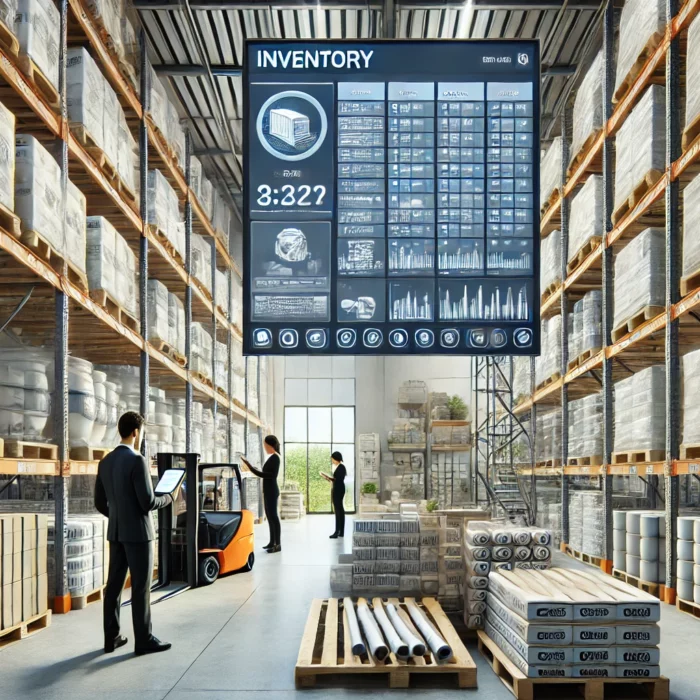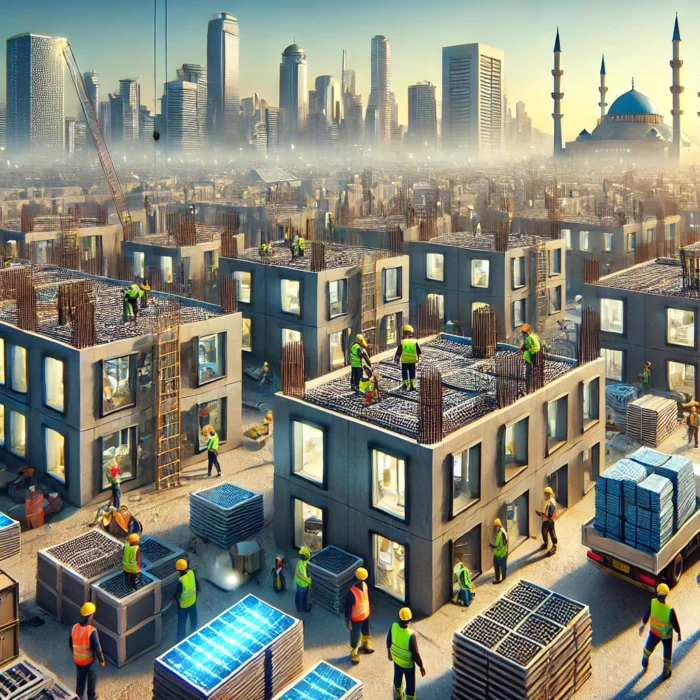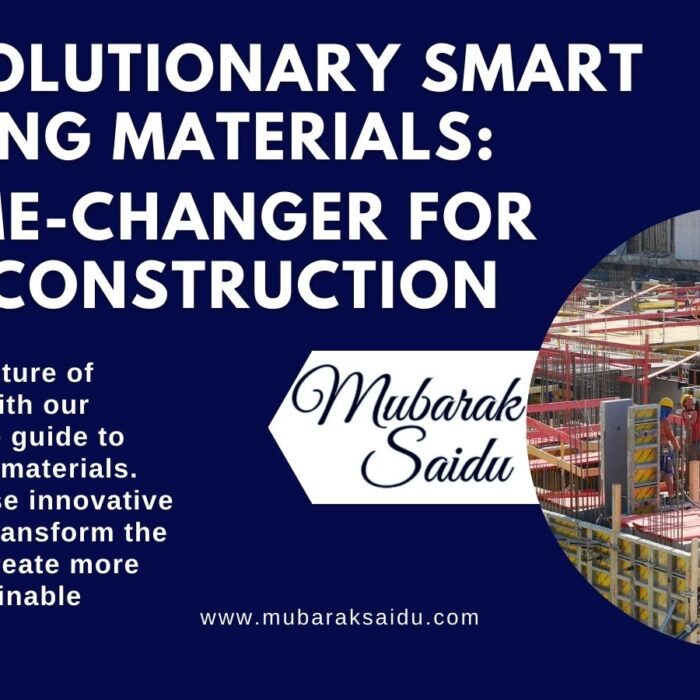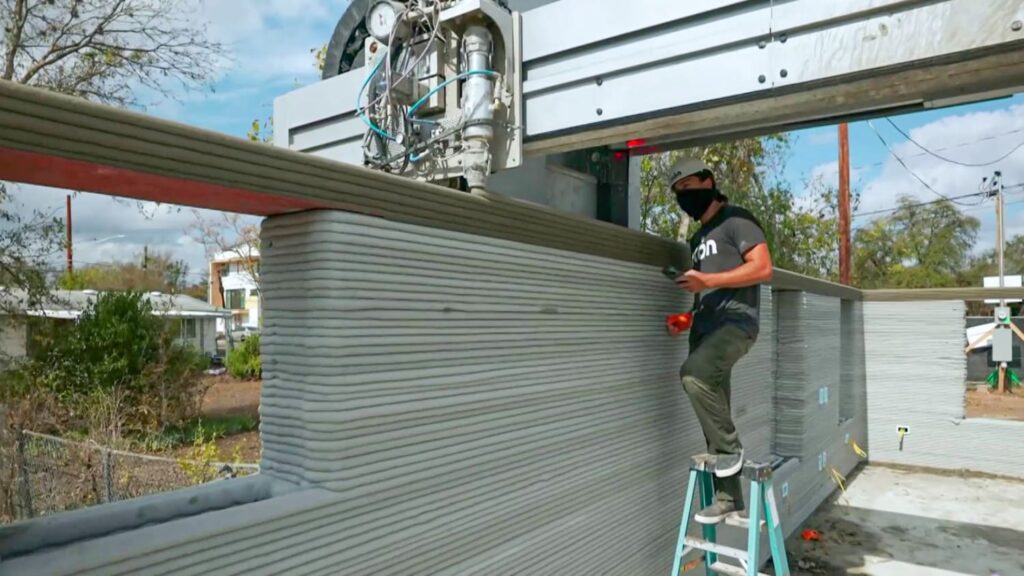
Wow, can you believe it? A 500-square-foot house built in just 24 hours! That’s the mind-blowing power of 3D printing in construction. As a Nigerian blogger who’s been following this technology for years, I’m constantly amazed by how it’s revolutionizing the way we build. I’m talking about 3D printed houses.
3D printing in construction supplies isn’t just some futuristic concept anymore – it’s happening right now, and it’s changing everything! I remember when I first heard about it, I thought it was just for making tiny plastic toys.
Men, I was so wrong! Now we’re talking about printing entire buildings, bridges, and even space habitats. It’s like science fiction come to life!
The construction industry is finally embracing this game-changing technology, and for good reason. From reducing waste to speeding up build times, 3D printing is solving some of the biggest challenges we face in construction.
Trust me, as someone who’s seen the ups and downs of traditional building methods, this is a breath of fresh air.
So, buckle up! We’re about to dive into the world of 3D printing in construction supplies. Whether you’re a fellow Nigerian contractor looking to stay ahead of the curve or just a curious reader, I promise you’re in for a treat.
Let’s explore how this technology is quite literally laying the foundation for the future of construction!
[Insert image: An infographic showing the basic process of 3D printing in construction]
The Basics Of 3D Printing In Construction
Alright, let’s break this down in simple terms. 3D printing in construction is basically like a giant version of those desktop 3D printers you might have seen, but instead of plastic figurines, we’re talking about walls, foundations, and entire structures!
What Is 3D Printing Technology In Construction?
Imagine a massive robot arm squeezing out layers of concrete like icing on a cake, but following a precise computer design. That’s 3D printing in construction in a nutshell!
It’s a way of building structures by depositing materials layer by layer, without the need for traditional formwork or molds.
I’ll never forget the first time I saw it in action at a construction expo. My jaw practically hit the floor! It was like watching a building grow out of the ground.
Types Of 3D Printing Technologies Used In Construction
Now, don’t think it’s all just one big concrete dispenser. There are actually several types of 3D printing tech used in construction:
- Extrusion-based systems: These are the most common. They work like a giant pastry bag, squeezing out concrete or other materials.
- Powder-based systems: These use a powder material that’s selectively bonded together.
- Wire arc additive manufacturing: This one’s pretty cool – it uses welding technology to create metal structures.
Each has its pros and cons, and I’ve seen some impressive results with all of them. It’s not just about picking one – it’s about choosing the right tool for the job.
Materials Used In 3D Printing For Construction Supplies
Here’s where things get really interesting. We’re not just talking about plain old concrete here. The materials used in 3D printing for construction are like a chef’s special ingredients:
- Special concrete mixes: These are designed to flow smoothly through the printer but set quickly.
- Geopolymers: These eco-friendly materials can be made from industrial waste products.
- Soil and clay: Yes, we’re literally printing with dirt! It’s amazing for sustainable building.
- Plastics and composites: Great for creating unique architectural elements.
I once visited a site where they were experimenting with a mix that included recycled plastic. Can you imagine? We’re turning our plastic waste into buildings!
The best part is, these materials can often be sourced locally, which is a big deal for us in Nigeria where importing construction materials can be a real headache.
So there you have it – the basics of 3D printing in construction. It’s not just about the tech, it’s about rethinking how we approach building from the ground up.
And let me tell you, from what I’ve seen, this is just the beginning. The possibilities are endless, and I can’t wait to see what comes next!
3D Printing Applications In Construction
Buckle up, folks! We’re about to dive into the really exciting stuff. The innovative applications of 3D printing in construction are so diverse, it’s like watching a sci-fi movie come to life.
Let me walk you through some of the coolest innovations I’ve come across.
3D Printed Concrete Structures
First up, we’ve got entire buildings being printed from concrete. I’m not kidding! I remember visiting a construction site in Lagos where they were printing a small office building.
The precision was incredible – curves and angles that would have been a nightmare with traditional methods were being created with ease.
These 3D printed concrete structures aren’t just for show, either. They’re durable, cost-effective, and can be built in a fraction of the time it takes for traditional construction. Imagine how this could revolutionize housing
projects in our rapidly growing cities!
Custom-Designed Architectural Elements
Now, this is where things get really fun. 3D printing is allowing architects to let their imaginations run wild. I’ve seen intricate facades, unique staircases, and even entire feature walls that look like they’ve been sculpted by master artisans.
There was this one project in Abuja where they 3D printed these amazing decorative panels inspired by traditional Nigerian patterns. It was a beautiful blend of modern technology and our rich cultural heritage. The possibilities for customization are endless!
On-Site Production Of Construction Components
This one’s a game-changer, especially for remote construction sites. Instead of waiting for parts to be delivered, you can just print them on the spot!
It’s not just convenient – it’s also reducing transportation costs and carbon emissions. Plus, if you need a custom part, you can design and print it in no time. No more delays waiting for special orders!
3D Printed Formwork And Molds
Last but not least, let’s talk about formwork and molds. These are usually a huge hassle in construction – expensive to make and often single-use. But with 3D printing, complex, reusable molds can be created quickly and affordably.
I saw this in action at a bridge construction site. They 3D printed these intricate molds for the support structures, which would have been incredibly difficult and expensive to make traditionally.
The result? Faster construction, less waste, and some pretty impressive-looking bridges!
The best part about all these applications is how they’re making construction more accessible and affordable. In a country like Nigeria where we’re always looking for ways to build better and faster, 3D printing is opening up a world of possibilities.
From entire buildings to tiny custom parts, 3D printing is reshaping the construction landscape. And let me tell you, as someone who’s been in this industry for years, it’s incredibly exciting to see.
The future of construction is here, and it’s being printed one layer at a time!
[Insert image: A comparison chart showing traditional construction methods vs. 3D printing]
Advantages Of 3D Printing In Construction
Alright, let’s talk about the good stuff – the benefits of 3D printing in construction. Trust me, there are plenty! As someone who’s seen the challenges of traditional construction firsthand, I can’t tell you how exciting these advantages are.
Increased Efficiency And Speed
First off, 3D printing is FAST. I mean, lightning fast compared to traditional methods. Remember that 500-square-foot house I mentioned earlier? 12 hours!
That’s not a typo. I’ve seen projects that would typically take months, completed in just weeks.
This speed isn’t just impressive – it’s game-changing. Imagine how quickly we could build schools, hospitals, or disaster relief housing.
In Nigeria, where we’re always racing to keep up with urban growth, this could be a real lifesaver.
Cost Reduction
Now, let’s talk money. 3D printing can significantly cut construction costs. How? Well, it reduces labor needs, minimizes material waste, and speeds up the entire process. Time is money, after all!
I visited a housing project in Lagos where they estimated savings of up to 30% compared to traditional methods. That’s huge! It could make home ownership more accessible for many Nigerians.
Improved Sustainability And Waste Reduction
As someone who’s seen the mountains of waste on traditional construction sites, this benefit is close to my heart.
3D printing is incredibly precise, using only the exact amount of material needed. No more over-ordering “just in case”!
Plus, many of the materials used in 3D printing are recyclable or made from recycled content. Talk about turning trash into treasure!
Enhanced Design Flexibility And Customization
This is where things get really fun. 3D printing allows for complex designs that would be extremely difficult or expensive with traditional methods. Curves, hollows, intricate patterns – the sky’s the limit!
I’ve seen some incredible examples of this. There was this community center in Enugu with these amazing organic shapes that looked like they were grown, not built.
It’s opening up new possibilities for incorporating traditional African designs into modern architecture.
Addressing Labor Shortages In The Construction Industry
Last but not least, 3D printing could help address the skilled labor shortage in construction. While it doesn’t eliminate the need for workers, it does reduce the reliance on hard-to-find specialized skills.
This could be particularly beneficial in rural areas where skilled labor is scarce. Thanks to 3D printing technology, much-needed infrastructure in rural projects would be built with minimal outside help.
The benefits of 3D printing in construction are clear and numerous. From cost savings to sustainability, from design freedom to addressing labor shortages, this technology is poised to transform the way we build.
As a Nigerian in the construction supplies industry, I’m incredibly excited about the potential of 3D printing to address some of our most pressing challenges.
Affordable housing, rapid urbanization, and sustainability – 3D printing could be a powerful tool in tackling all of these issues.
Of course, it’s not without its challenges (which we’ll get to in a bit), but the benefits are too significant to ignore. The future of construction is looking bright, and it’s being built one 3D-printed layer at a time!
Challenges Of 3D Printing In Construction
Alright, let’s keep it real for a minute. As amazing as 3D printing in construction is, it’s not all smooth sailing. There are some hurdles we need to overcome.
But hey, that’s part of the excitement, right? Let’s break down these challenges.
Regulatory And Building Code Compliance
This is a big one, folks. Our building codes weren’t written with 3D printed houses in mind!
I remember chatting with a local official who was scratching his head trying to figure out how to inspect a 3D printed wall. It was like trying to fit a square peg in a round hole!
In Nigeria, and many other countries, regulations are still catching up. We need new standards and testing methods to ensure 3D printed structures are safe and up to code. It’s a work in progress, but we’re getting there.
Material Limitations And Durability Concerns
Now, don’t get me wrong – 3D printed structures can be tough as nails. But we’re still in the early days, and there are some question marks about long-term durability.
How will these structures hold up after 50 years? 100 years?
I visited a test site where they were putting 3D printed samples through the wringer – extreme temperatures, high humidity (you know how it gets in Lagos!), the works.
The results were promising, but more research is needed.
Initial Investment Costs
Let’s talk money. While 3D printing can save costs in the long run, the initial investment is no joke. Those big 3D printers don’t come cheap! I nearly fell off my chair when I saw the price tag on one of these machines.
For small construction firms in Nigeria, this can be a major barrier. We’re talking about equipment that costs more than some companies make in a year. It’s a big leap of faith for many businesses.
Skill Gap And Training Requirements
Here’s another challenge: 3D printing in construction requires a whole new skill set. It’s not just about traditional building knowledge anymore – now we need people who understand both construction AND 3D printing technology.
These challenges are real, but they’re not insurmountable. In fact, they’re opportunities for innovation. I’ve seen some creative solutions already:
- Some companies are partnering with universities to develop new testing methods for 3D printed structures.
- Material scientists are working on new, more durable printing materials.
- There are initiatives to create shared 3D printing facilities, reducing the cost burden on individual companies.
- Technical schools are starting to offer courses in 3D printing for construction.
The road ahead isn’t without its bumps, but that’s true for any revolutionary technology. As we tackle these challenges, we’re not just improving 3D printing – we’re pushing the entire construction industry forward.
So yes, there are hurdles. But from where I’m standing, the potential benefits far outweigh the challenges. It’s an exciting time to be in construction, and I can’t wait to see how we overcome these obstacles in the coming years!
Future Trends And Developments
Hold onto your hard hats, folks! The future of 3D printing in construction is looking brighter than a welding arc. As someone who’s been following this tech closely, I can tell you – we ain’t seen nothing yet!
Let’s dive into some of the exciting trends and developments on the horizon.
Integration With Other Technologies (AI, IoT, Robotics)
Picture this: AI-powered 3D printers that can learn and optimize their printing process on the fly. Or how about IoT sensors embedded in 3D printed structures, constantly monitoring for any signs of wear or damage? This isn’t science fiction – it’s already happening!
I recently watched a video of a construction site where they were using robotic arms to do the 3D printing. It was like watching a carefully choreographed dance.
The precision and speed were mind-blowing. And the best part? These robots can work 24/7 without getting tired!
Advancements In Materials Science
Now, this is where things get really exciting. Scientists are cooking up new materials that could revolutionize 3D printing in construction.
I’m talking about smart building materials – self-healing concrete that can repair its own cracks, materials that can change properties based on temperature or humidity etc.
There’s even research into using local soils and waste materials for 3D printing. Imagine building a house using the very earth it stands on!
This could be a game-changer for sustainable construction, especially in rural areas of Nigeria where traditional building materials are scarce.
Potential For Off-World Construction (E.G., Lunar Habitats)
Okay, I know what you’re thinking – “Off-world construction? Come on!” But hear me out. NASA and other space agencies are seriously looking into 3D printing as a way to build structures on the Moon and Mars.
While this might seem far removed from our day-to-day construction needs, the tech they’re developing could have amazing applications right here on Earth.
Imagine 3D printing emergency shelters in disaster zones using minimal resources. The possibilities are mind-boggling!
Scaling Up For Larger Construction Projects
We’re not just talking about small houses anymore. The future of 3D printing in construction is thinking big – really big. There are already plans for 3D printed skyscrapers and bridges.
I saw a presentation on a proposed 3D printed high-rise in Lagos. The design was like nothing I’ve ever seen before – organic shapes that would be impossible with traditional construction methods.
It’s not just about building faster or cheaper anymore; it’s about reimagining what our built environment could look like.
The future of 3D printing in construction is incredibly exciting. We’re moving towards a world where buildings can be smarter, more sustainable, and more adaptable to our needs.
Here are a few more trends to keep an eye on:
- On-demand, customizable housing solutions
- 3D printed infrastructure for developing regions
- Integration of renewable energy systems directly into 3D printed structures
- Bio-based and biodegradable printing materials
As a Nigerian in the construction industry, I’m particularly excited about how these developments could address some of our most pressing challenges – rapid urbanization, affordable housing, and sustainable development.
Of course, it’s important to remember that technology is just a tool. The real power lies in how we use it.
As we move forward, we need to ensure that these advancements benefit everyone, not just those who can afford the latest tech.
The future of construction is being printed before our eyes, and let me tell you – it’s looking pretty spectacular!
So keep your eyes peeled, because the next big thing in construction might just be coming out of a 3D printer near you!
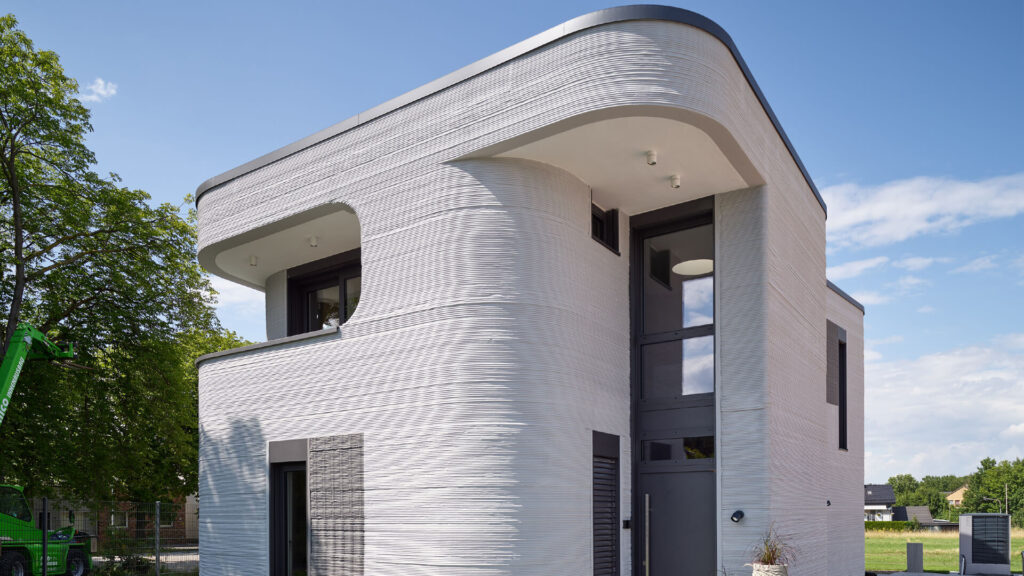
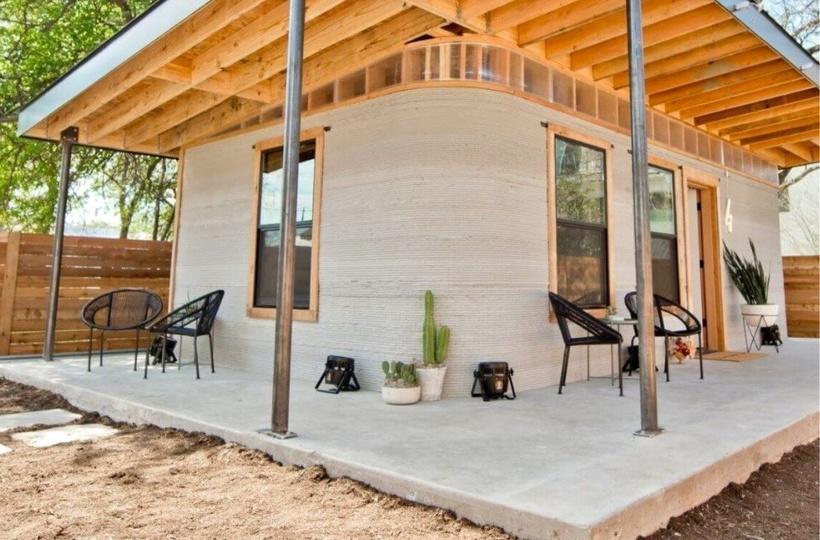
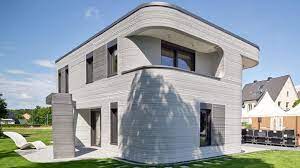
Case Studies: Successful Implementation Of 3D Printing In Construction
Let’s get down to the nitty-gritty, shall we? It’s one thing to talk about the potential of 3D printing in construction, but it’s another to see it in action.
I’ve had the privilege of exploring some amazing projects around the world, and let me tell you, they’re mind-blowing!
Let’s dive into three case studies that showcase just how transformative this technology can be.
Example 1: 3D Printed Office Building In Dubai
First up, we’ve got the Office of the Future in Dubai. This isn’t just any old office – it’s the world’s first fully functional 3D printed office building!
I had the chance to visit this architectural marvel, and let me tell you, it’s something else.
The entire structure was printed in just 17 days. Yes, you read that right – 17 days! And it only took two days to install on site. Compare that to the months it would take using traditional methods.
The building’s unique curved shape would have been a nightmare to construct conventionally, but with 3D printing, it was a breeze.
What really struck me was how they integrated smart technologies into the design. The office has IoT sensors throughout, making it one of the most energy-efficient buildings I’ve ever seen.
It’s not just a building – it’s a glimpse into the future of workspaces.
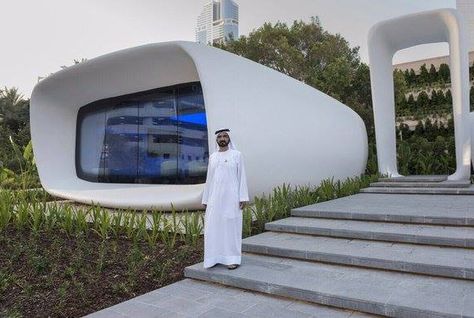

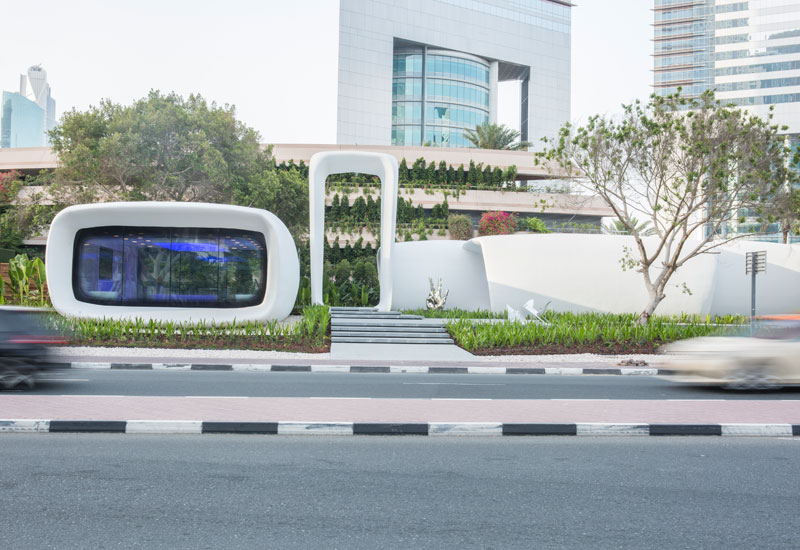
Example 2: 3D Printed Houses In Mexico For Low-Income Families
Next, let’s talk about a project that’s close to my heart. In Mexico, a company called ICON partnered with a non-profit to 3D print homes for low-income families.
This project shows how 3D printing can be a powerful tool for social good.
They managed to print a 500-square-foot house in just 24 hours at a cost of about $4,000.
That’s less than the cost of a second-hand car! The homes are sturdy, comfortable, and designed to withstand local weather conditions.
What I love about this project is how it’s addressing the global housing crisis.
Imagine if we could implement something similar in Nigeria’s urban areas, where affordable housing is in such high demand.
It’s projects like these that really showcase the transformative potential of 3D printing in construction.
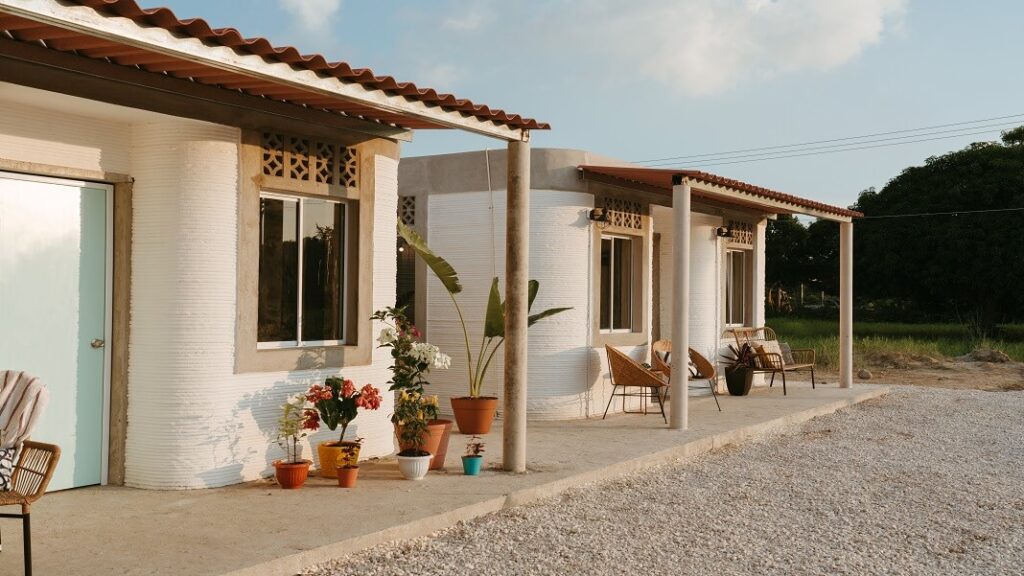
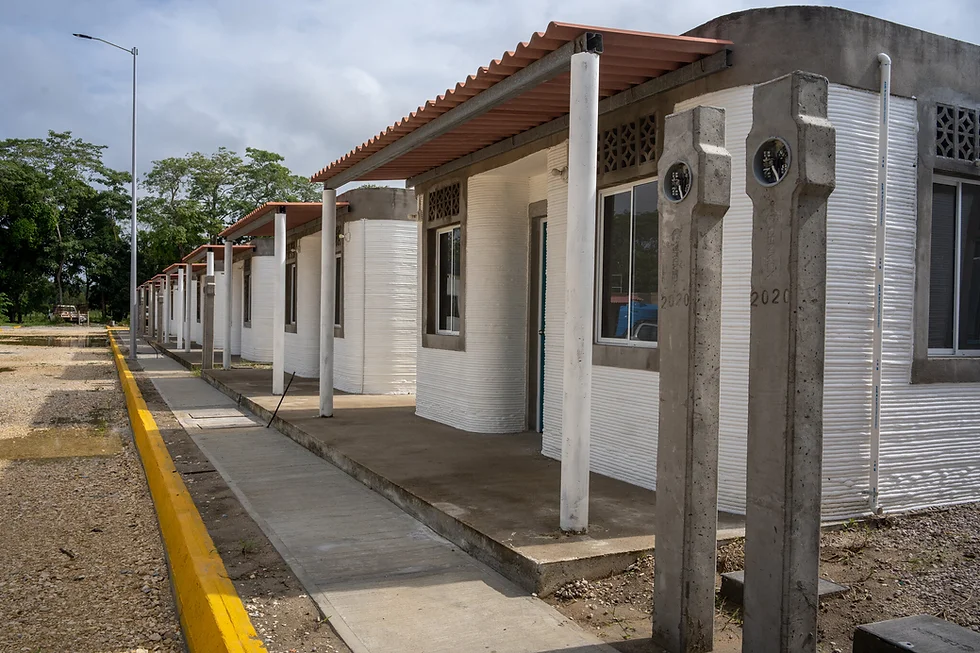
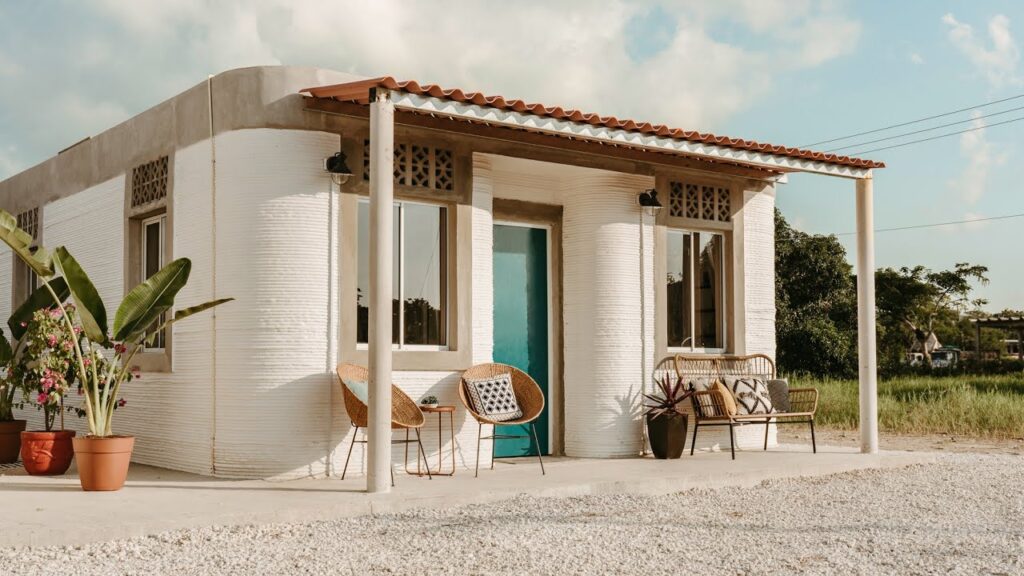
Example 3: 3D Printed Bridge In The Netherlands
Last but not least, let’s cross the ocean to the Netherlands, where they’ve built the world’s first 3D printed steel bridge.
Now, I’m an old-school construction guy, and I’ll admit, I was skeptical when I first heard about this. A 3D printed bridge?
No way it could be strong enough, right? Well, I’m happy to say I was wrong!
This 12-meter-long pedestrian bridge in Amsterdam is a marvel of engineering. It was printed by robots in a factory and then transported to the site for installation.
The whole process took just six months – that’s incredibly fast for bridge construction.
But here’s the really cool part – the bridge is packed with sensors that continuously monitor its structural health.
It’s like the bridge can tell engineers when it needs maintenance. Talk about smart infrastructure!
These case studies show that 3D printing in construction isn’t just a pie-in-the-sky idea – it’s here, it’s real, and it’s making a difference.
From office buildings to affordable housing to critical infrastructure, 3D printing is proving its worth across a wide range of applications.
What excites me most is thinking about how we could apply these lessons here in Nigeria.
Imagine 3D printed schools in rural areas, or affordable housing projects in our cities, or quick-build infrastructure to support our growing economy. The possibilities are endless!
Of course, every project has its challenges, and these were no exception. But that’s part of the learning process.
With each successful implementation, we’re getting better at harnessing this technology.
So, the next time someone tells you 3D printing in construction is just a gimmick, you can point them to these real-world examples.
The future of construction is here, folks, and it’s being printed one layer at a time!
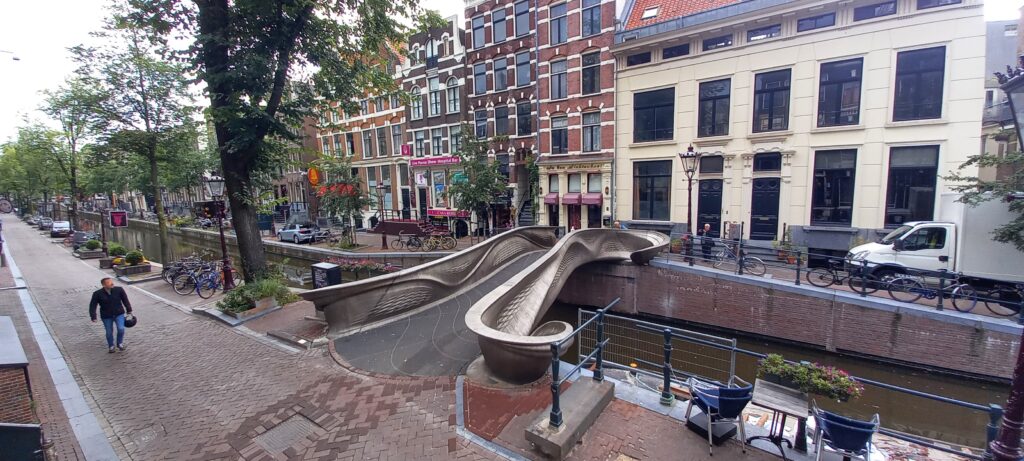
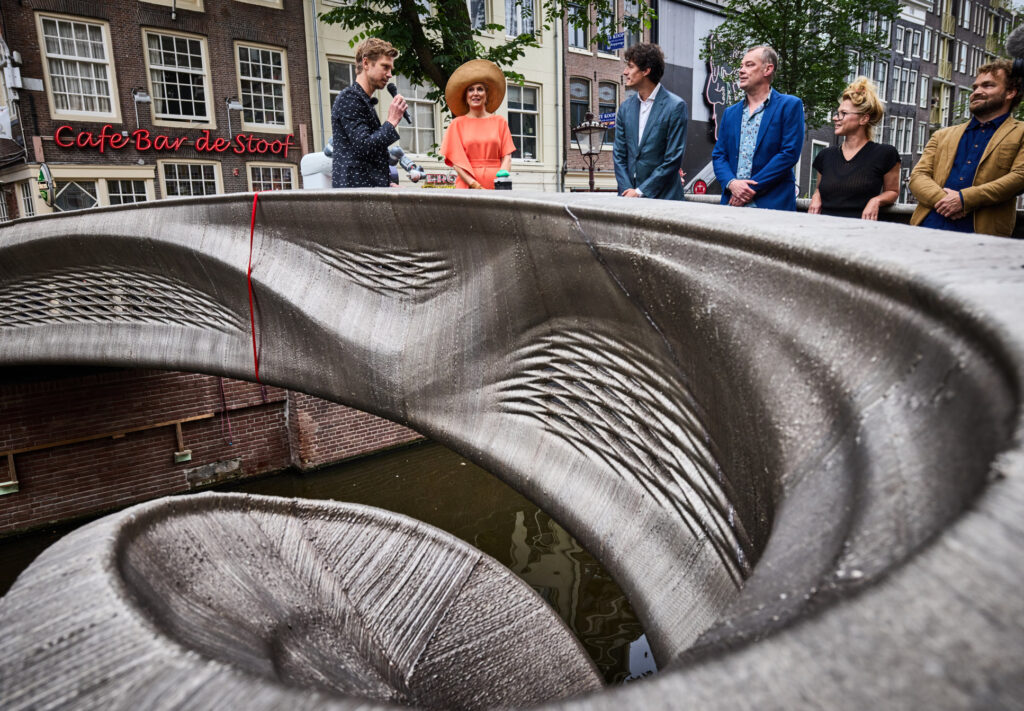

How To Get Started With 3D Printing In Construction Supplies
Alright, my fellow construction suppliers, let’s talk about how you can jump on this 3D printing bandwagon.
Trust me, I know it can seem overwhelming at first – I felt the same way! But don’t worry, I’ve got your back.
Here’s a step-by-step guide to get you started.
Assessing The Construction Needs
First things first, you need to figure out how 3D printing fits into the construction business in your location.
Are you looking to print entire structures? Or maybe you want to start smaller with architectural elements or custom parts?
Pro tip: Start small. You don’t need to revolutionize your entire operation overnight.
Maybe begin with 3D printing molds or decorative elements. Baby steps, people!
Choosing The Right 3D Printing Technology
Now, this is where things can get a bit technical. There are different types of 3D printers out there, and choosing the right one is crucial.
You’ve got your extrusion-based systems, powder-based systems, and more.
I’ll never forget the time I went to a construction tech expo in Lagos. I was like a kid in a candy store, checking out all the different 3D printers.
But here’s the thing – the flashiest, most expensive printer isn’t always the best choice.
Consider factors like:
- The scale of your projects
- The materials you’ll be working with
- Your budget (both initial investment and ongoing costs)
- The level of detail you need in your prints
Don’t be afraid to ask for demos or trial periods. It’s a big investment, so you want to be sure you’re making the right choice.
Training And Upskilling Your Workforce
Let’s be real – 3D printing in construction requires some new skills. But don’t let that scare you off! With the right training, your team can become 3D printing pros in no time.
Remember, your workers are your greatest asset. Invest in their skills, and they’ll help your business grow.
Plus, let me tell you, seeing the excitement on their faces when they first successfully 3D printed a complex part – priceless!
Collaborating With 3D Printing Specialists And Suppliers
You don’t have to go it alone! There are plenty of 3D printing specialists and suppliers out there who can help you on your journey.
I’ve found some great partners right here in Nigeria. There are companies that offer 3D printing services, so you can try out the technology without investing in your own printer right away.
There are also consultants who can help you integrate 3D printing into your existing workflows.
Don’t be shy about reaching out to universities and research institutions too.
Many of them are doing cutting-edge work in 3D printing and are often happy to collaborate with industry partners.
Starting your 3D printing journey in construction might seem daunting, but remember – every expert was once a beginner.
Here are a few more tips to help you along:
- Stay informed: Follow industry news, attend webinars, join online forums. The 3D printing world moves fast!
- Network: Connect with others in the industry who are using 3D printing. Nothing beats learning from others’ experiences.
- Start with non-critical components: As you’re learning, focus on parts where mistakes won’t be costly or dangerous.
- Be patient: There’s a learning curve with any new technology. Don’t get discouraged if things don’t work perfectly right away.
- Keep an open mind: 3D printing might change how you approach design and construction. Embrace the new possibilities!
Remember, the goal isn’t to replace traditional construction methods overnight.
It’s about adding a powerful new tool to your toolkit. With 3D printing, you can offer your clients innovative solutions, improve your efficiency, and stay ahead of the curve in our ever-evolving industry.
So, are you ready to start your 3D printing journey?…
Trust me, it’s an exciting ride. Who knows? Your next project could be the one that revolutionizes construction in Nigeria.
Let’s build the future, one layer at a time!
Final Thoughts
Wow, what a journey we’ve been on! From the basics of 3D printing in construction to cutting-edge case studies, we’ve covered a lot of ground.
As we wrap up, I can’t help but feel excited about the future of our industry.
3D printing is more than just a cool technology – it’s a game-changer for construction.
It’s making building faster, more affordable, and more sustainable. It’s allowing us to create structures that were once thought impossible.
And perhaps most importantly, it’s opening up new possibilities for addressing critical issues like affordable housing and rapid urbanization.
But here’s the thing – the true power of 3D printing in construction lies not in the technology itself, but in how we use it.
It’s up to us, the builders, architects, and innovators, to harness this tool and use it to create positive change in our communities.
As we move forward, let’s keep pushing the boundaries. Let’s explore new materials, new designs, new applications.
Let’s think about how we can use 3D printing to preserve our rich architectural heritage while building for the future. And let’s not forget the importance of sustainable, responsible construction practices.
To my fellow Nigerian construction professionals – we have a unique opportunity here. We can be at the forefront of this revolution, using 3D printing to address the specific challenges we face in our country.
Imagine 3D printed schools in rural areas, affordable housing in our cities, or rapidly deployed infrastructure to support our growing economy.
So, I encourage you – don’t just read about 3D printing in construction. Get out there and experience it for yourself.
Visit a 3D printing construction site if you can. Talk to others who are using this technology. And most importantly, start thinking about how you can incorporate 3D printing into your own projects.
The future of construction is being printed before our eyes, and it’s up to us to shape it. Are you ready to be part of this exciting journey? I know I am!
Now, I’d love to hear from you. Have you had any experience with 3D printing in construction?
What excites you most about this technology? What challenges do you see?
Let’s keep this conversation going in the comments below. Together, we can build a brighter, more innovative future for construction in Nigeria and beyond!
